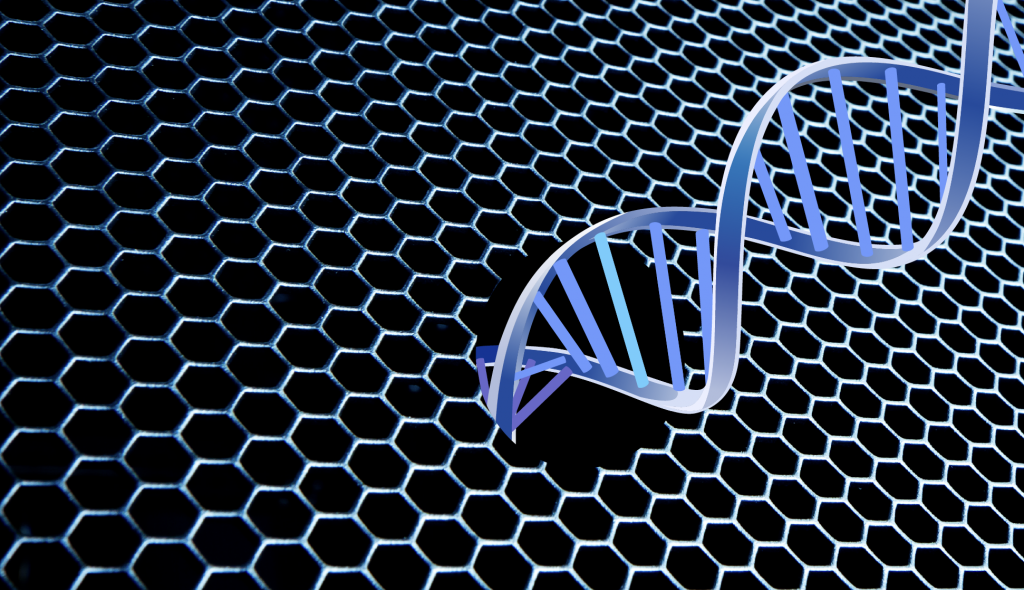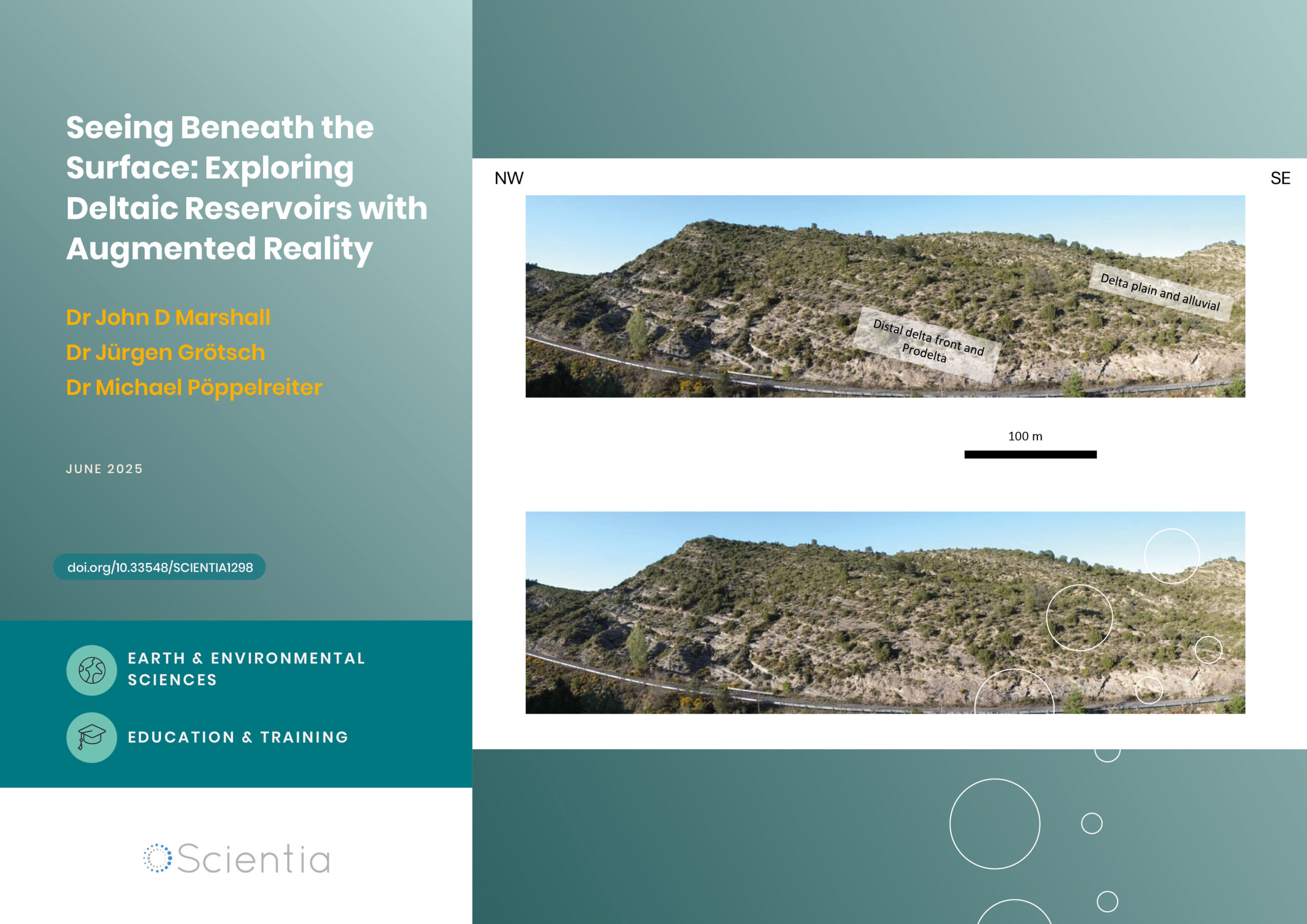Dr Jean-Pierre Leburton – Small but Mighty: Game-Changing Nanopore Research
The far-reaching benefits of nanopore research encompass fields as diverse as physics, healthcare, big data processing and environmental studies. At the University of Illinois at Urbana-Champaign, Dr Jean-Pierre Leburton is conducting research focused on the use of nanopores in ultrathin solid-state molecular materials, such as graphene and 2D transition-metal dichalcogenides, for DNA sensing applications. This offers a low-cost and highly effective method of identifying biomolecules, and could have widespread medical applications, enabling rapid, early and effective disease diagnosis and prompting effective treatment, as well as providing invaluable technologies for assisting with DNA sequencing.
Nanopore-Based Biosensing
Nanopores are tiny holes with huge potential. They can be created in both biological materials, such as a lipid membrane, and ‘solid-state’ materials, including silicon nitride, graphene and transition-metal dichalcogenides (TMD) – and both types have a wealth of possible uses. One important application that has garnered attention in recent years is nanopore-based biosensing.
This technology involves a nanopore that connects two structures containing saline solution. A current made up of salt ions is passed through the nanopore, and when a biological molecule passes through, it causes alterations in the ionic conductivity, which can be measured as a change in current. These changes in current can then be used to identify molecules.
For example, each nucleotide on a DNA strand causes a specific change that can be used to identify that specific nucleotide, towards building a picture of the complete DNA strand. Thus, nanopore-based biosensing could represent a promising technology for DNA sequencing, which is used in a range of crucial applications – from assessing a patient’s risk of genetic disease, to monitoring mutations in SARS-CoV-2, the virus that causes COVID-19.
Not only could nanopore-based biosensing be used for DNA sequencing, but it could also represent a low-cost method for detecting changes or damages in DNA strands that could indicate the development of a disease, such as cancer. This could be extremely beneficial in healthcare, allowing the early signs of a particular disease to be rapidly and accurately detected, and enabling clinicians to provide early treatment, leading to far better outcomes for patients.
Biological nanopores possess several significant limitations, including their set pore diameter and their sensitivity to experimental environments. Therefore, solid-state nanopores are a burgeoning area of research, as their pore dimensions can be tuned, and being more robust, they can be utilised across a range of different experimental conditions.
Graphene and TMD are particularly promising two dimensional (2D) solid-state nanomaterials, as they are ultrathin and boast favourable electrical and mechanical properties. These features make graphene and TMD nanopores well suited to DNA detection and sequencing. The use of graphene and TMD nanopores is one area of research conducted by Dr Jean-Pierre Leburton and his colleagues, who are based at the University of Illinois at Urbana-Champaign, USA.

Innovations with Cross-Disciplinary Impacts
Dr Leburton and his team are engaged in a range of interrelated projects involving 2D solid-state nanopores, quantum point contact transistors for DNA sensing and multipore systems. As well as pushing forward the envelope in physics, the team’s impressive body of work could have important benefits for healthcare research, including the advancement of DNA sensing, which would have a profound impact on disease diagnosis and treatment.
The central idea of Dr Leburton’s research is to shape 2D membranes into a ribbon around the nanopore, and take advantage of the material’s semiconducting properties to flow an electronic current along the ribbon and detect the presence of DNA in the pore.
In a study entitled ‘Graphene quantum point contact transistor for DNA sensing’, Dr Leburton and his colleagues designed a device made from a 2D nanoscale semiconductor material that can be used to enhance DNA identification with nanopores. The team’s highly-responsive graphene-based DNA sensing device is not only able to identify DNA, but can also control the molecules that pass through the nanopores. The researchers were able to demonstrate the device’s ability to alter the electrical conductance of graphene nanopores, and to adjust their sensitivity to external charges to improve the accuracy of measurements.
In addition to being able to optimise detection sensitivity, the device also has the ability to control the motion and speed of the DNA strands that pass through the nanopore, which sets it apart from existing technologies. This innovation breaks boundaries by providing the ability to slow down the movement of DNA, allowing for accurate DNA sequencing.
Ultimately, the rapid detection of molecules facilitated by the device could prove extremely useful in genome sequencing, in addition to early disease detection. In a subsequent study, Dr Leburton indicated that his paradigm of electronic detection offers the tremendous advantage of parallelism in biomolecule detection compared to the conventional ‘ionic current blocking’ approach, and could be easily and effectively integrated with semiconductor electronics for amplification and data processing, further enhancing its potential.

Detecting DNA Methylation
In a recent study, entitled ‘Detection and mapping of DNA methylation with 2D material nanopores’, Dr Leburton and his colleagues highlighted how they were able to detect and locate methylated DNA using nanopore sensors made of graphene or molybdenum di-sulphide (MoS2).
Methylated DNA is a DNA molecule that contains a methyl group – a carbon atom bonded to three hydrogen atoms. Changes in DNA methylation can occur in the early stages of disease development, including cancers. Therefore, measuring these changes could allow clinicians to detect cancers and other diseases earlier, allowing them to provide much more effective treatment.
The reason that Dr Leburton and his colleagues decided to use graphene and MoS2 when fabricating their nanopore membranes is because of their excellent physical and electrical properties. Hence, these materials allow the team to build solid-state nanopores that overcome the limitations typically encountered with biological nanopores.
In their sensing technique, Dr Leburton and his team labelled DNA methylation sites with a protein called MBD1. The researchers then allowed methylated DNA strands to pass through the nanopores in their graphene or MoS2 membranes. By monitoring changes in electrical current passing along the membrane, they were able to locate the methyl groups at different positions on the strands.
This innovative work indicates the possibility of using solid-state nanopore membranes to efficiently locate the sites of methylation along a strand of DNA. In addition to detecting diseases through changes in DNA methylation, these nanopore membranes could also be used in other areas, including DNA barcoding, which can be used to identify different species in the environment. Identifying the species present in a given ecosystem is invaluable for monitoring biodiversity, and allows for the design of more effective conservation strategies.
DNA Damage Detection for Disease Diagnosis
In another study, Dr Leburton and his collaborators used nanopores to detect and map DNA damages. Again, they made use of graphene and MoS2 nanopore membranes, and were able to sense minute changes in the structure of DNA passing through the nanopore by measuring the current.
This is important research, given that damages or breaks (also called nicks) on double-stranded DNA can lead to a range of diseases, including cancers. Rather counterintuitively, chemotherapy and radiation therapy used in the treatment of cancer can also cause DNA damages, potentially leading to the development of further tumours. In both of these cases, the ability to detect DNA damages early on is vital for improving patient outcomes.
Using computational modelling techniques, Dr Leburton and the team were able to illustrate the ability of their device to detect structural changes in DNA strands, and identify the precise location of these changes along each strand. They also explained the interactions that can occur between different types of DNA nicks.
The researchers believe that this research could help enhance our understanding of nicks on DNA and their impact on cell activities. Additionally, there is potential for this research to contribute to the regulation of chemotherapeutic drugs and radiation dosage in the treatment of cancer. Outside of this, the work could contribute to further applications such as DNA data storage for computation.

Versatile Devices with Various Applications
In a later study entitled ‘Classification of Epigenetic Biomarkers with Atomically Thin Nanopores’, Dr Leburton and his team combined the use of molecular and device simulations with statistical signal processing algorithms to present a versatile and generally applicable biosensor technology.
The technology again uses a 2D solid-state nanopore membrane for the detection of several different types of biomolecules, in real time, based on their unique electrical current alterations. Because of its versatility, the technology can be adapted and applied to detect a range of different biomolecules and changes in DNA.
In this work, the team was able to successfully establish the impressive detection resolution of the device and its ability to conduct measurements of DNA strands through multiple different channels simultaneously.
Dr Leburton and his colleagues’ interrelated investigations make up an impressive body of research that has the potential to be powerfully impactful in myriad fields, including big data collection and processing, physics, electronics, healthcare and environmental studies. Their work provides a tangible example of seamless crossover between disciplines, with an expert in physics, with particular knowledge in electrical and computer engineering, breaking boundaries in seemingly disparate fields.
Not only has he presented promising new technologies that could facilitate low-cost and highly effective DNA sequencing, which is a crucial process for getting to the heart of DNA and understanding the make-up of the human body, his devices could save lives by enabling diseases to be detected early on, leading to optimal treatment. Fittingly for an electrical engineering scientist, Dr Leburton is making waves, not just in physics but far beyond.
Reference
https://doi.org/10.33548/SCIENTIA654
Meet the researcher

Professor Jean-Pierre Leburton
Department of Electrical and Computer Engineering
University of Illinois at Urbana-Champaign
Champaign, IL
USA
Professor Jean-Pierre Leburton received his PhD from the University of Liege, Belgium, in 1978. He joined the University of Illinois, USA, in 1981, having previously worked as a research scientist at the Siemens A.G. Research Laboratory in Munich, Germany. He held the Hitachi LTD Chair on Quantum Materials at the University of Tokyo, Japan, in 1992 and was a Visiting Professor in the Federal Polytechnic Institute in Lausanne, Switzerland in 2000. He is currently the Gregory Stillman Professor of Electrical and Computer Engineering at the University of Illinois at Urbana-Champaign and Adjunct Professor at the University of Illinois in Chicago. His research interests are non-linear transport in quantum wires and carbon nanotubes, spintronics and molecular and bio-nanoelectronics, and he is author and co-author of more than 300 research papers in international journals, and of several patents in device electronics. Professor Leburton is the recipient of numerous high-level awards, including the 2004 ISCS Quantum Device Award, the Gold medal for scientific achievement by the Alumnus Association of the University of Liège, Belgium (2004), the CCMR Serendipity Award, Seoul Korea (2019), and the 2021 IEEE Nanotechnology Council Pioneer Award. He is also an associated member of the Royal Academy of Science of Belgium.
CONTACT
E: jleburto@illinois.edu
W: https://ece.illinois.edu/about/directory/faculty/jleburto
FUNDING
NSF
DARPA
Oxford Nanopore Technology
University of Illinois
SRC
FURTHER READING
A Girdhara, C Sathe, K Schulten, J Leburton, Graphene quantum point contact transistor for DNA sensing, PNAS, 2012, 42, 16748.
N Athreya, A Sarathy, J Leburton, Large Scale Parallel DNA Detection by Two-Dimensional Solid-State Multipore Systems, ACS Sensors, 2018, 1032.
N Athreya, O Milenkovic, J Leburton, Interaction dynamics and site-specific electronic recognition of DNA-nicks with 2D solid-state nanopores, npj 2D Materials and Applications, 2020, 32.
H Qiu, A Sarathy, K Schulten, J Leburton, Detection and mapping of DNA methylation with 2D material nanopores, npj 2D Materials and Applications, 2017, 1, 3.
A Sarathy, N Athreya, LR Varshney, J Leburton, Classification of Epigenetic Biomarkers with Atomically Thin Nanopores, The Journal of Physical Chemistry Letters, 2018, 9, 19, 5718.

Want to republish our articles?
We encourage all formats of sharing and republishing of our articles. Whether you want to host on your website, publication or blog, we welcome this. Find out more
Creative Commons Licence
(CC BY 4.0)
This work is licensed under a Creative Commons Attribution 4.0 International License. 
What does this mean?
Share: You can copy and redistribute the material in any medium or format
Adapt: You can change, and build upon the material for any purpose, even commercially.
Credit: You must give appropriate credit, provide a link to the license, and indicate if changes were made.
More articles you may like
Probing Electron Dynamics in the Ultrafast Regime
In the atoms that make up the matter around us, negatively charged particles called electrons have properties such as spin and orbital angular momentum. Researchers at Martin Luther University Halle-Wittenberg have developed a theoretical framework which allows them to simulate the dynamics of the spin and orbital angular momentum of electrons in materials when probed with an ultrafast laser pulse. Using this framework, they are able to simulate different materials and improve our understanding of dynamics on an atomic scale.
Seeing Beneath the Surface: Exploring Deltaic Reservoirs with Augmented Reality
In the Aínsa Basin of the Spanish Pyrenees, the Mondot-1 well was drilled, cored, and fully logged to capture a detailed record of a long-buried ancient river delta system. Dr. John D. Marshall, Dr. Jürgen Grötsch, and Dr. Michael C. Pöppelreiter with co-workers at Shell International used this core to trace how sediments once flowed across the landscape, and were deposited under shifting tectonic conditions. The team employed augmented reality and interactive virtual displays; these innovative tools offer new ways to explore subsurface depositional systems, and are particularly useful in locations where physical access to the core is difficult, or no longer possible.
Dr Jim Wu | Ziresovir Offers New Hope for Treating Respiratory Syncytial Virus Infections
Respiratory syncytial virus (RSV) causes respiratory tract infections in children and adults. While for many patients the outcomes of infection are mild, for others, infection can prove fatal, and there is a lack of effective treatments. Dr Jim Wu from the Shanghai Ark Biopharmaceutical Company in China carries out his vital research to develop new, safe, and effective treatments to tackle this killer.
Dr Sandra Grumelli | The Importance of the Choline in Chronic Lung Infections
People with chronic lung conditions like COPD and cystic fibrosis are vulnerable to lung infections caused by the bacterium Pseudomonas aeruginosa. These infections are often difficult to treat and can cause sudden worsening of symptoms, known as flare-ups or acute exacerbations. While we know P. aeruginosa triggers inflammation and damage in the lungs, much less is understood about how exactly it causes these flare-ups, or how it survives in such a harsh environment. Dr Sandra Grumelli from the Center of Investigations of Respiratory Diseases in Argentina, has explored the role of a common molecule called choline which is released during infection. Using a combination of mouse models and laboratory experiments, she has discovered that choline not only makes breathing harder, it also helps P. aeruginosa adapt to and persist in the lungs. Her research opens up new possibilities for tackling chronic infections by targeting the bacteria’s energy use and the way it responds to its environment.



